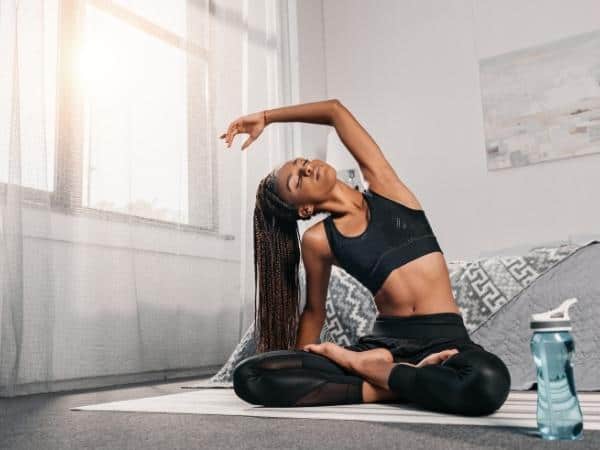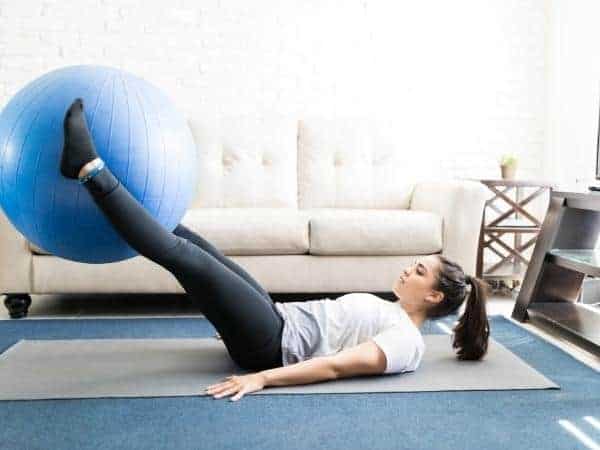A Guide To Putting Together Your Own Fitness Program
Learning how to put together your own fitness program and routine is a huge benefit for anyone interested in exercising. When you have your own program, you don’t need to rely on anyone else to help you out. Not only that, but you have a clear map of what to do, with each session planned out for each day. Mentally, this provides so much motivation as you’ve made life easier for yourself. It’s a lot easier to work out when you can see what needs to be done!

This is a collaborative post.
Naturally, you might be confused about how you start putting a plan together. This guide won’t provide you with a program to follow, but it will set some guidelines that’ll help you create your own fitness program.
Set your goals
The first thing you should do before starting any program is to set your goals. This will basically dictate what your program will be about, and what you will be aiming towards. For example, do you want to lose weight? If that’s your goal, you will have to create a program that focuses on losing weight. So, this will include doing a lot of workouts designed to burn lots of calories. You’ll want to be as active as possible, ensuring that you burn the calories to reach your goal.
So, before you do anything else, write down the main goal that you want to achieve. From here, you can take that goal and possibly split it up into smaller, more manageable goals. This can help you split up your program or plan into different phases. But, it also gives you smaller goals to cross off on your way to the big goal, ensuring that your motivation remains intact.
Choose the style of training
There’s no easy way to title this point, so this is the best way of describing what we’re on about. Essentially, we’re talking about the way in which you will train, but also with regards to the setting and equipment. Basically, are you going to follow this program in a gym, will it be at home, do you need certain equipment? All of these questions, and plenty more, will need to be answered before you start putting a plan together.
For example, if you start putting your own fitness program together to lose weight, and you decide you want to do 30 minutes on the exercise bike 3 days a week, then 30 minutes on the rowing machine, you need access to this equipment. If you have a gym, that’s fine, but what if you’re working out from home? You need to work with what you have, and this means choosing a style of training that suits your needs based on what’s already available to you.
Set your training schedule
Next, you have to set your training schedule. Now, this can be altered slightly, and you don’t always have to stick to it by the book. However, it’s a very good idea to set a weekly schedule that determines when you’ll work out, and for how long, etc. As an example, you could decide to go to the gym 5 days per week. That’s quite frequent, but you split your workouts up across the five days.
So, you may do resistance training on Monday, Wednesday, and Friday, with cardio training on Tuesday and Thursday. Then, you have the weekend off to fully recover, before repeating everything again. This is just one of the many ideas you can play around with when choosing your schedule for your own fitness program. Ultimately, it will come down to a variety of factors – including your goals, business, etc.
If you are just starting out on a fitness journey, it is not recommended that you push yourself too hard. Instead of five active days a week, only exercise for three. As you get fitter and more comfortable, you can increase the frequency of your training. This is a form of progression, which we’ll talk about in more detail later on.
Cover functionality and flexibility
Regardless of what your goals are or of what the main focus of your plan is, you should always cover both functionality and flexibility. Functional fitness refers to doing things that translate into real-life situations. For instance, the deadlift is considered a functional movement as it simulates the way you’d crouch down to pick something up in real life. Working on your balance is another example of functionality as it trains your body to have better balance, helping you out in the real world.
So, when you are choosing the exercises for your own fitness program, always try to include as many functional ones as possible. This is where you see the true benefits of working out!
Alongside this, you should focus on flexibility as well. Always add some elements of flexibility and mobility into your workout plan. The best time to do this is at the beginning and end of each session. Or, you could dedicate entire sessions to focus on improving your flexibility and mobility.
If you look online, you’ll find loads of things like beginner Pilates for you to follow from home. Doing Pilates or yoga routines are incredible for improving flexibility, mobility, balance, and core strength. Therefore, they tick both the functionality and flexibility boxes.

Find some exercise inspiration
At this point, you have a goal in mind, you know roughly the type of exercise you want to do, and you’re aware that functionality and flexibility must be included. You’ve also got your schedule, so now you need to start fitting the pieces of the puzzle together.
Ironically, this is probably the toughest part of putting your plan together – especially if you’re new to working out. Trying to figure out what exercises to choose and how many sets and reps to use can be confusing. The best thing to do is go online and find some inspiration. You can find plenty of workout videos that target specific areas of the body. E.g. search for a leg workout, then add it to your weekly routine. Or, you can take exercises from different videos or online articles, putting them together for your own workout.
It genuinely is all about doing your research, seeing what other people are doing, then adding in your exercises to suit your needs. As a good general rule, it helps to train each muscle group for ten sets per week. This will help with basic muscle and strength building, which also translates to better weight loss. If you really want to build muscle, you’ll have to increase the sets.
Speaking of this, it’s important that all plans have an element of resistance training in them. Even if weight loss is your primary goal, you will see better results when mixing cardio and resistance training. This is because building muscle helps your body burn fat more efficiently. So, they help each other out, and neither should be neglected.
Progress your plan
Every plan or program needs to come with progressions built into it. We touched upon this when talking about the frequency of your training. Going from 3 workouts a week to 4 is a sign of progression. Upping it to 5 or 6 is further progress. You have other ways of progressing a plan as well, such as increasing the amount of resistance, making the sessions longer, adding more sets or reps, and so on.
The key to a good exercise program is that you start at one level and reach another one by the end of it. For beginners, this might mean that you start your program by only using gym machines and equipment. As you get stronger and more confident, you can push your body further and try using free weights. Then, you might do unilateral work, which is a bigger struggle as it tests your balance. These are all progressions that teach you a few things about your plan.
Firstly, progressions are a great way of increasing the intensity of your sessions. In essence, they ensure that your body never gets comfortable. If your plan never changes for 12 weeks, you won’t see the optimal results. There will reach a point where you find it too easy to do what you’re currently doing. At this point, you need to find a progression to make things harder again. It is the only way to challenge your body and elicit long-term chances.
Secondly, progressions are a great way of, well, measuring your progress! It can be so motivational to look at where you are now, compared to in the beginning. Imagine you start your plan only being able to run 2km before you just physically can’t run anymore. Then, fast forward a few weeks or months and you’re suddenly running 5 or 10km! Being able to look at this progress is so good for your mentality, making it more likely that you will continue to keep working out.
To conclude, you should keep all of these points in mind if you want to make an exercise plan for yourself. Don’t worry if your plan isn’t perfect, you can always tweak and change it as you go along. You’ll also find that, the more experienced you get, the easier it is to put a plan together and alter it on the fly.
